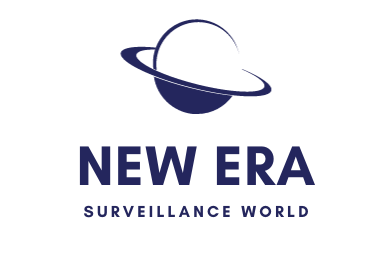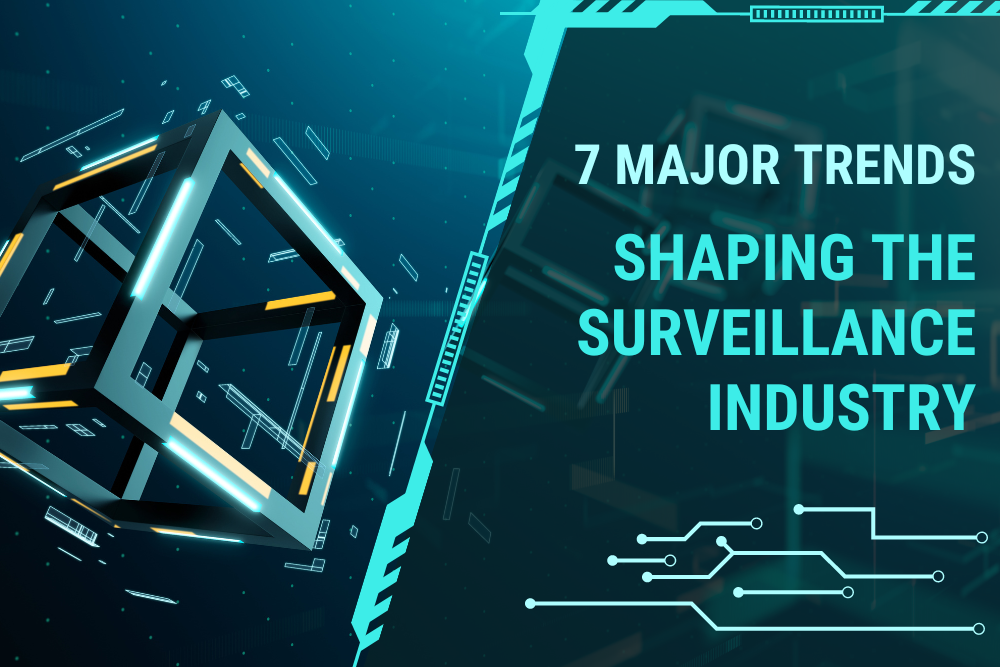In recent years, the physical security industry has been undergoing rapid transformations. In this ever-evolving landscape, breakthroughs in cutting-edge technologies such as artificial intelligence, machine perception, and the Internet of Things have continuously pushed boundaries. We have witnessed security systems becoming deeply integrated and more comprehensive, expanding their capabilities and taking on intelligent tasks to enhance security and operational efficiencies. All of these advancements are taking place across various industries and types of organizations.
Today, New Era Surveillance World Magazine (NESW) has invited Klaus Schneider, a senior engineer from HIKD, a globally leading provider of video surveillance and AIoT solutions, to share his insights on the seven major emerging trends in the security industry.

Allow us to provide a brief introduction to HIKD. As a renowned supplier of video surveillance and AIoT solutions, HIKD has established a strong partnership with HIKVISION, enabling them to deliver a complete range of video solutions based on HIKVISION’s cutting-edge technology. With competitive pricing, HIKD offers exceptional value to their customers. Now, let’s hear from Klaus Schneider as he shares his valuable insights with us.
Chapter 1: Diversified Applications of Artificial Intelligence and the Need for an Open Ecosystem
We have witnessed the emergence of diverse artificial intelligence products and applications that cater to the complex and fragmented needs of customers. The industry is also exploring the audio and text capabilities of AI, starting with visual AI. For instance, AI-driven audio anomaly detection can be utilized to identify equipment malfunctions in industrial environments, thereby enhancing worker safety. Furthermore, AI technology itself is advancing into the realm of self-learning, with faster self-training and optimization compared to supervised learning.

HIKVISION’s Pro Series PTZ cameras equipped with ColorVu and AcuSense AI technologies exemplify the capabilities of AI applications. These cameras can differentiate potential security threats, such as humans and vehicles, from innocent moving objects like animals, falling leaves, or heavy rain. As a result, false alarms are significantly reduced, enabling security teams to focus their efforts on genuine security events. Simultaneously, triggered alerts are sent to security teams or alarm receiving centers (ARCs), leading to faster and more effective responses. When combined with HIKVISION NVR products, the HIKVISION PTZ cameras allow users to capture more details in video images during playback. Automatic recognition of vehicles or individuals enables more efficient searching of video clips. These cameras also facilitate remote security scenarios, enabling individuals to monitor video clips and issue alarms via their mobile devices.
All of these advancements necessitate a more open ecosystem with open technologies, resources, and even protocols to foster industry collaboration. Open technologies like containerization and virtualization hold immense potential for our industry, enabling greater openness in hardware products.
Chapter 2: AIoT Continues to Connect the Physical and Digital Worlds
Delving further into the realm of artificial intelligence, we believe that the integration of AI with the Internet of Things (AIoT) will continue to be a major trend in 2023, reshaping the scope of the security industry. The introduction of more AIoT solutions not only provides intelligent protection but also contributes to enhancing operational efficiency across various industries and organizations.

Chapter 3: 24/7 Imaging Technology Enhances Visual Experience
Capturing clear and vibrant security images around the clock is a fundamental requirement for video surveillance users. However, low-light conditions, particularly during nighttime, have always posed a significant challenge in achieving this goal.
Now, with the advancements in several imaging technologies, we witness the elimination of these challenges. Dual-spectrum image fusion, utilizing two sensors, combines infrared and visible light imaging to reproduce vivid colors in dimly lit environments. AI-based Image Signal Processing (AI-ISP) technology, powered by deep learning algorithms, fundamentally enhances visual noise reduction and optimization for nighttime imagery. HIKVISION, for instance, has recently expanded its camera lineup with ColorVu technology, providing high-quality lenses and sensors that deliver crisp, full-color imaging even in extremely low-light conditions.

The new series also includes 4K cameras that offer an ultra-high-definition experience and zoom cameras capable of magnifying color video images during nighttime. The ColorVu cameras from HIKVISION employ top-notch lenses and sensors, enabling clear and colorful imaging in near-complete darkness. Additionally, we have integrated other leading technologies such as 4K for ultra-high-definition imaging and zoom capabilities for full-focal-length, full-color imaging. Equipped with ColorVu, 4K cameras deliver superior image quality and richer details, making them ideal for scenarios that require clear, high-resolution images, such as stadiums, airports, ports, and parking lots.
Chapter 5: Extending Perception Capabilities to a Broader Spectrum
For security applications, perception capabilities extend far beyond the visible light spectrum, reaching along the electromagnetic spectrum to expand the ability to perceive the physical world in new ways. For instance, hyperspectral imaging technology has been employed to analyze optical radiance characteristics and eutrophication trends, enabling the monitoring of water quality in rivers and lakes. In the millimeter-wave range, radar products assist in measuring vehicle speed and distance. The X-ray band finds wide applications in security inspections and is now expanding its usage in industrial equipment defect detection.
These multidimensional perception capabilities converge to create innovative solutions capable of performing a range of new operations. Examples include radar-assisted video systems for perimeter protection, integrated solutions combining video and sonar arrays for traffic management, and alarm systems with wide coverage. Detectors are also utilized for smart home applications.

By harnessing the power of diverse sensing technologies, the security industry is able to broaden its reach, enhance situational awareness, and provide comprehensive solutions for various domains and sectors. The integration of different perception technologies enables a more comprehensive understanding of the environment, empowering organizations to effectively respond to security challenges and improve operational efficiency.
Chapter 5: Increased Focus on Device and System Usability
The usability of devices and systems significantly impacts the daily lives of security professionals, especially considering the industry-wide shortage of workforce and the rising costs associated with labor. This trend has sparked increased attention to optimize products through simpler configuration processes, leverage interactive experiences to reduce installation time, and lower costs associated with equipment maintenance and skill development.
Under the NVR products of HIKVISION’s DeepinMind series, for instance, facial images captured by HIKVISION Cameras can be modeled and analyzed. List alarm and stranger alarm functionalities are achieved through face picture libraries, enabling targeted searches based on image and name features. This breakthrough greatly streamlines labor costs.
For example, we observe that more installation personnel prefer to utilize mobile applications over PCs for device installation and maintenance, as interactive and simplified processes are better suited to their needs.
As the industry places a stronger emphasis on usability, manufacturers are investing in user-centered design, intuitive interfaces, and mobile-friendly platforms to ensure seamless and efficient experiences. This shift towards improved usability not only increases productivity but also addresses the labor challenges faced by the security industry, allowing professionals to focus on their core responsibilities and achieve optimal outcomes.

Chapter 6: Shifting Towards Greener and Low-Carbon Operations for Sustainable Development
The trend towards green manufacturing and low-carbon initiatives within the security industry is truly inspiring. Security manufacturers are introducing products with extended lifespans, recyclable materials and packaging, as well as the utilization of renewable energy sources. These initiatives effectively reduce waste and emissions. For instance, the demand for solar-powered cameras continues to rise due to their effectiveness in harnessing limitless clean energy from the sun. Moreover, a growing number of industry players are establishing medium to long-term environmental management goals, encompassing low-carbon production, efficient energy utilization, waste and chemical management, and greener office environments.
Chapter 7: Zero Trust Continues to Be the Preferred Cybersecurity Strategy
Cybersecurity remains a critical and challenging issue for all stakeholders in the industry, with customers and regulatory bodies increasingly focusing on the security of their data and privacy, setting higher standards and requirements. We observe the growing emphasis on the value of the Zero Trust concept as the preferred approach when formulating cybersecurity strategies. Zero Trust is a strategic initiative aimed at preventing data breaches by eliminating the notion of trust within organizational network architecture. In the realm of cybersecurity, trust becomes a vulnerability. Zero Trust is a network security approach that mandates “never trust, always verify” for our interconnected systems.

As organizations recognize the need for comprehensive protection against evolving cyber threats, the adoption of Zero Trust principles ensures a proactive and layered defense strategy, focusing on continuous monitoring, strong access controls, and granular user authentication. By implementing Zero Trust, organizations can mitigate risks, detect potential intrusions, and safeguard their critical assets and sensitive data more effectively.
In conclusion, we express our sincere gratitude to Klaus Schneider, Senior Systems Integration Engineer at HIKD, for sharing his invaluable insights with us today. His expertise and in-depth knowledge have provided us with a deeper understanding of the future trends shaping the security and surveillance industry.
As we navigate the ever-evolving landscape of security, it is crucial to stay informed and adapt to the latest advancements in technology and industry practices. By embracing the seven major trends discussed in this article, organizations can position themselves at the forefront of innovation and ensure a safer and more secure future.
At New Era Surveillance World Magazine, we remain committed to delivering cutting-edge industry news and expert perspectives to our readers. We look forward to continuing our collaboration with industry leaders like HIKD to provide comprehensive coverage of the latest developments in the security and surveillance domain.
Once again, we extend our heartfelt appreciation to Klaus Schneider and HIKD for their invaluable contributions to this article. Together, we strive towards a future where advanced technologies and smart solutions drive the transformation of the security industry.














Leave a comment